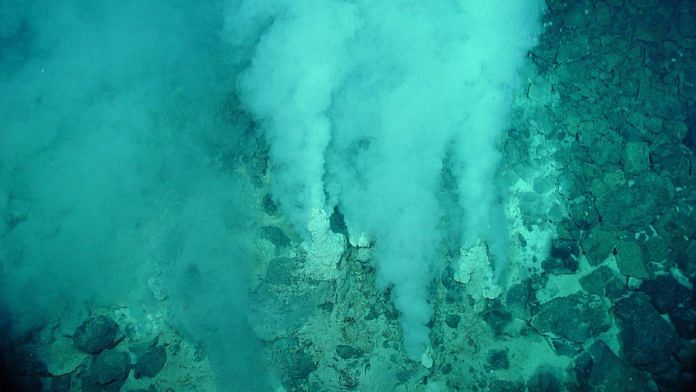Bengaluru: Scientists know from studying the genomes of simple life forms that the first organisms on earth had genes that could break down oxygen and hydrogen peroxide (H2O2).
But how hydrogen peroxide — which can be a useful source of oxygen when broken down — came to be in the waters, where life first evolved, has been a mystery. It’s known that only trace amounts of H202 would have been present on early Earth — Earth in its first one billion years.
Published in the journal Nature Communications Monday, a new peer-reviewed study by scientists from Newcastle University in the UK shows that tectonic plate movement — and the associated stresses on the earth’s crust — was a source of oxygen that helped drive the biogeochemistry of where life first evolved on Earth.
In the study, scientists showed how under oxygen-free conditions, large amounts of H2O2 can be released from rocks when water is added and temperatures reach close to boiling point. Only trace amounts of H2O2 are released from the same rocks when temperatures drop below 80 °C, the study shows.
This window of temperature matches the suspected range of temperatures in which scientists believe early life forms may have evolved, in hot volcanic vents near the sea floor.
“We propose that the thermal activation of mineral surface defects during geological fault movements and associated stresses in the Earth’s crust was a source of oxidants that helped drive the (bio)geochemistry of hot fractures where life first evolved,” the authors of the study wrote.
Also Read: Ancient rocks reveal how Earth’s magnetic field bounced back to save life on the planet
Last Universal Common Ancestor (LUCA)
The last universal common ancestor or LUCA is a term that refers to a population of organisms that’s the most common recent ancestor of all life on Earth today. The LUCA isn’t the first life form on earth, but the most recent one that’s the ancestor to everything alive today.
The LUCA is thought to have lived in deep-sea hydrothermal vents near lava or magma flows about 4 billion years ago, half a billion years after the formation of the planet. The existence of the LUCA has been determined by ribosomal RNA sequencing, which shows shared features and traits among all modern organisms, such as mechanisms to process genetic information.
Genomic analysis has revealed that the LUCA lived in a hot environment, was autotrophic (consumed carbon dioxide for energy), and used hydrogen.
It also had genes for breaking down oxygen and hydrogen peroxide, but studies of past climate conditions have revealed that only trace amounts of H2O2 could have been present in the atmosphere or the oceans at the time.
Now, the team of scientists from the UK has presented experimental evidence to show that the temperature of the environment where the LUCA lived was an important factor as it contributed to the localised production of H2O2.
They show that when volcanic or tectonic activity takes place under high temperatures, the stress and heat generated releases defects in silicate rocks, which react with the water, releasing H2O2 and other oxygen-containing compounds in high concentrations.
But this occurs only when temperatures are between 80°C and 100°C, which is in keeping with the environment that the LUCA is thought to have lived in.
This release of H2O2 and the ability of the LUCA to harness it is likely to have led to the ability to eventually tap oxygen.
(Edited by Amrtansh Arora)
Also Read: Where did ‘Black Death’ originate 7 centuries ago? Scientists say they’ve solved the mystery






